Transfer News
October – December 2023
Science meets Business at the EcoInnovate Summit - Scientists developed business models for their research
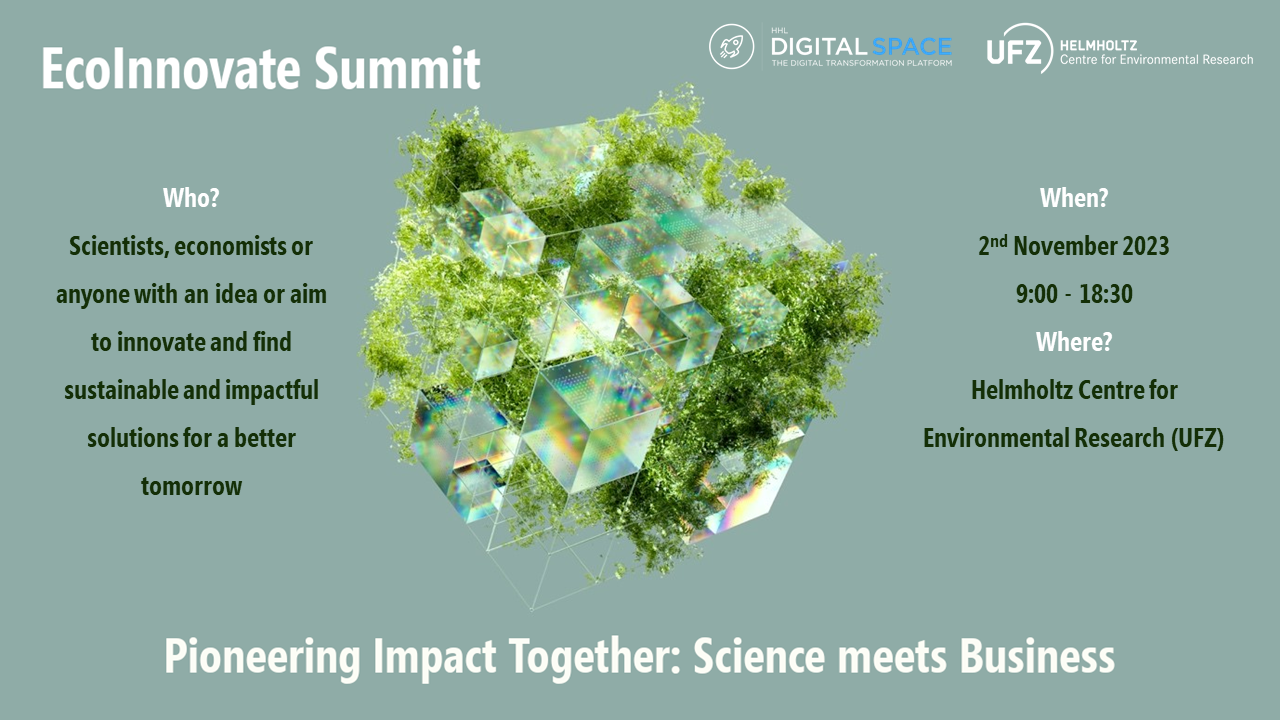 Scientists from the UFZ presented their research and discussed potential business models that could help transfer their research to society. Milina Rochelle Alber from the UFZ and Georg Bühler from the HHL guided the participants guests through the programme and helped them think outside the box.
Scientists from the UFZ presented their research and discussed potential business models that could help transfer their research to society. Milina Rochelle Alber from the UFZ and Georg Bühler from the HHL guided the participants guests through the programme and helped them think outside the box.
Inspiration also came from the start-up team from nadar.earth. Caroline Busse (CEO and Founder) along with Hyeonmin Kang (Chief Scientific Officer) gave insights into their start-up journey, answered questions and exchanged thoughts with the audience. To round up the day, key elements of the Business Model Canvas were explained and participants took the opportunity to think about UFZ research in teams, plot a canvas and present the results. All in all, the EcoInnovate Summit was a successful format to bring science and business together.
December 2023
Zeolite for the treatment of contaminated groundwater
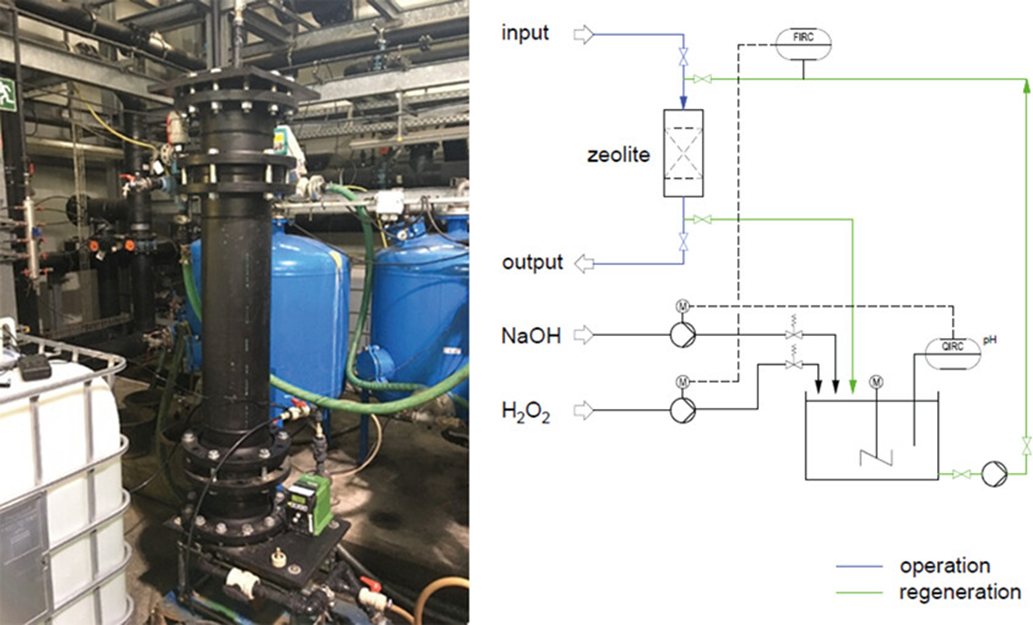 Left: Photo of the pilot reactor filled with Fe-MFI zeolite (black) and AC adsorber (left blue), Right: Suggested operation scheme of a full-scale, on-site regenerable Fe-zeolite adsorber.
Left: Photo of the pilot reactor filled with Fe-MFI zeolite (black) and AC adsorber (left blue), Right: Suggested operation scheme of a full-scale, on-site regenerable Fe-zeolite adsorber.
© Georgi et al.
The Ferrum-loaded zeolite is characterised by its outstanding adsorption performance for hydrophilic CHCs. A key element of this technology is the possibility of on-site regeneration by simple rinsing with H2O2. This process allows not only the reuse of the adsorbent but also the degradation of the adsorbed pollutants through a catalytic Fenton-like reaction.
In a joint pilot test with the Eneotech Umwelt GmbH, the Fe-zeolite, loaded with 30 kg of the adsorbent, was successfully used to treat 1470 m3 of groundwater. The system maintained its performance over 12 adsorption/regeneration cycles, indicating the robustness and effectiveness of this technology.
These promising results could mark an important step in the endeavour towards sustainable water treatment technologies. The ability to efficiently utilise on-site regenerable adsorbents could make a significant contribution to the fight against water pollution, while also advancing sustainability in environmental technology.
The team behind this innovation is now planning further steps to make the technology accessible for wider applications and potentially available worldwide.
We need support to carry out the next pilot test. Become our partner! Get in touch via
wtt@ufz.de
.
Publication:
Georgi, A., Köhler, R., Woszidlo, S., Mackenzie, K. D., Schierz, A., Schlosser, A. & Stanger, H. (2023). Fe‐Zeolite as on‐Site regenerable adsorber for chlorohydrocarbons in groundwater – from laboratory to pilot test. Chemie Ingenieur Technik. https://doi.org/10.1002/cite.202300096
December 2023
New case study in Leipzig provides results on barriers to green facade implementation in large cities
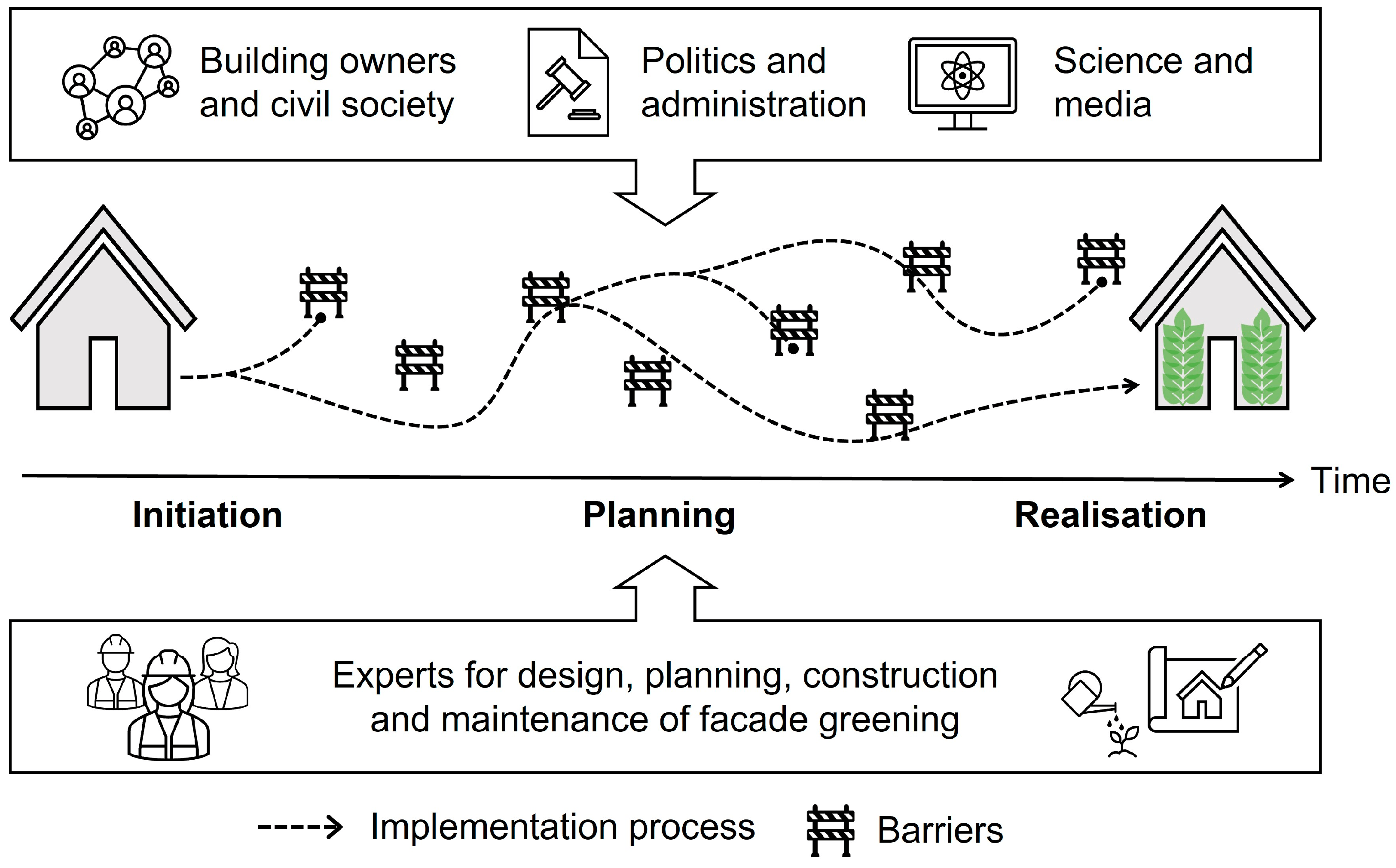 The UFZ researchers Wiebke Knifka, Raphael Karutz and Heinrich Zozmann analysed the barriers to vertical greening in major German cities using two methods: a systematic literature review and a participatory case study in Leipzig. The result is a comprehensive picture that even contains solutions for overcoming these barriers.
The UFZ researchers Wiebke Knifka, Raphael Karutz and Heinrich Zozmann analysed the barriers to vertical greening in major German cities using two methods: a systematic literature review and a participatory case study in Leipzig. The result is a comprehensive picture that even contains solutions for overcoming these barriers.
In total, the researchers were able to identify 24 social, political-administrative, economic, practical-technical and ecological barriers that prevent key actors from implementing vertical greening. Together with the local actors in the case study, the research team developed solutions to overcome the barriers.
These include providing informative, regulatory and financial incentives, adapting political-administrative policies, regulations and procedures, and supporting the practical-technical implementation process with information and experts. The comprehensive academic knowledge paired with the practical knowledge of the local actors and the results from the case study provide a comprehensive package for the sustainable transformation of major German cities.
The WTT team is very pleased about this exciting work!
Publication:
Knifka, W., Karutz, R. & Zozmann, H. (2023). Barriers and Solutions to Green Facade Implementation—A review of literature and a Case Study of Leipzig, Germany. Buildings, 13(7), 1621. https://doi.org/10.3390/buildings13071621
December 2023
Study: Nature-based solution for decentralised greywater treatment and reuse in cities
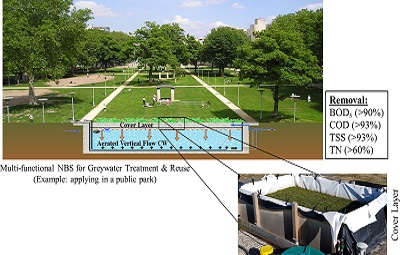 We are pleased to present the results of a very exciting study on sustainable water treatment and reuse by Khaja Zillur Rahman et al. The study investigates the implementation of a multifunctional, nature-based solution (NBS) for decentralised greywater treatment and reuse in urban areas.
We are pleased to present the results of a very exciting study on sustainable water treatment and reuse by Khaja Zillur Rahman et al. The study investigates the implementation of a multifunctional, nature-based solution (NBS) for decentralised greywater treatment and reuse in urban areas.
Results of the two phases of the study
The solution combines an aerated vertical flow construction (AVFCW) with an innovative cover to save space while minimising water loss through evapotranspiration. The results of the first phase of the investigation showed that the application of such a cover had no impact on the performance of the AVFCW.
In the second phase, the system demonstrated impressive performance, meeting agricultural irrigation standards (BOD5 < 10 mg/L; TSS < 10 mg/L; E.coli < 10 MPN/100 mL), removing BOD5 and TSS by more than 90% and E.coli by 0.81 +/- 0.45 log. This met the strict EU quality standards for agricultural irrigation (Class A).
In addition, soil analyses revealed no significant effects of irrigation with treated wastewater on soil properties. These promising results indicate that integrated and multifunctional NBS is an aesthetically pleasing and practical technology for greywater treatment and reuse.
The implementation of this technology could be a significant step towards addressing the global water crisis, especially in warm climates with arid or semi-arid conditions.
We are excited about these great results from the research team!
Publication:
Rahman, K. Z., Saadi, S. A., Rawahi, M. A., Knappe, J., Van Afferden, M., Moeller, L., Bernhard, K. & Müller, R. (2023). A Multi-functional Nature-based Solution (NBS) for greywater treatment and reuse at the same plot. Ecological Engineering, 191, 106952. https://doi.org/10.1016/j.ecoleng.2023.106952
November 2023
New results in the aviation industry: Producing sustainable aviation fuels from biomass
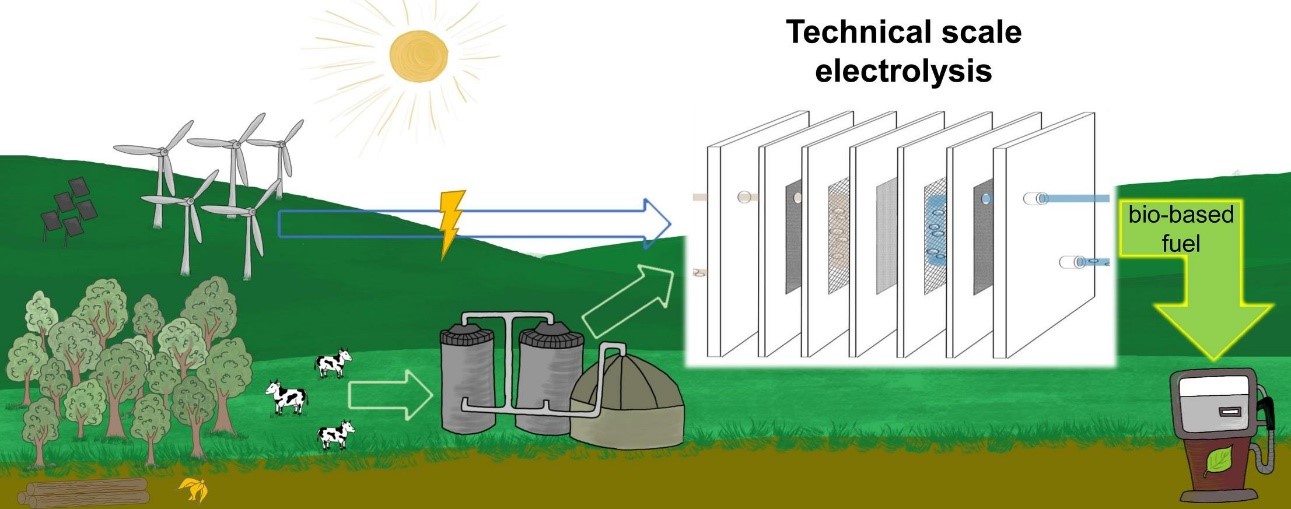 The search for more environmentally friendly and sustainable alternatives in air transport has reached a significant milestone. The latest research project by researchers Luis F.M. Rosa, Katharina Roehring and Falk Harnisch has shown that it is possible to produce alternative aviation fuels from biomass. This could pave the way to a more sustainable future for the aviation industry.
The search for more environmentally friendly and sustainable alternatives in air transport has reached a significant milestone. The latest research project by researchers Luis F.M. Rosa, Katharina Roehring and Falk Harnisch has shown that it is possible to produce alternative aviation fuels from biomass. This could pave the way to a more sustainable future for the aviation industry.
By applying an innovative Kolbe electrolysis of medium-chain carboxylic acids, in particular n-hexanoic acid, Rosa, Röhring and Harnisch succeeded in producing aviation fuels, mainly consisting of n-decanoic acid and n-hexanoic acid consisting mainly of n-decane.
This groundbreaking process was scaled up to a technical scale of 1 litre volume and 100 cm² electrode surface in a single electrolysis cell. The results obtained are promising, with a maximum production rate of 0.73g of n-decane per litre and hour per cm², high selectivity for n-decane between 76.3% and 97.8%, and Coulomb efficiencies of up to 68%.
This remarkable and promising advance could mark an important and remarkable turning point in research into greener aviation fuels and could help reduce the environmental impact of aviation in the long term and move the industry in a much more sustainable direction.
You can read the paper here!
November 2023
